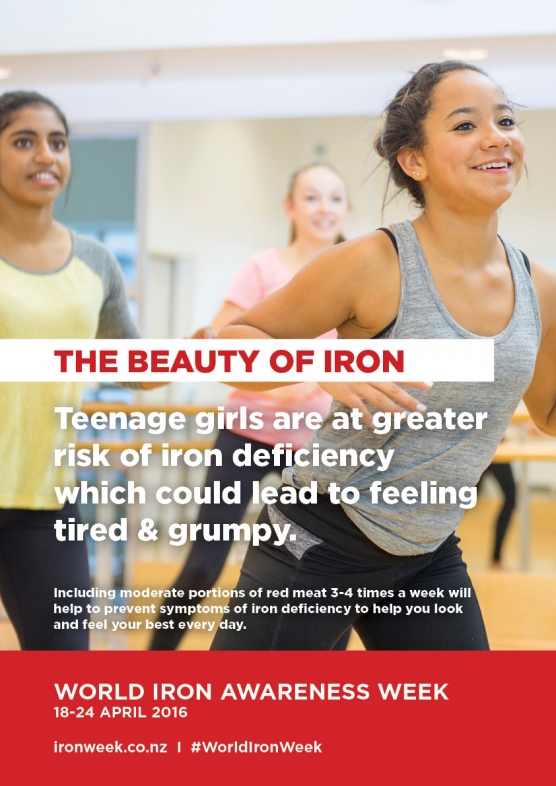22 Apr Why is rino (iron) important for wāhine
Ko te wahine he whare tangata, he waka tangata.
Within the female is the nurturing home of humankind and the channel from the spiritual to the physical (Herangi-Panapa, 1998)
Whare tangata is the house of humanity and is seen as the womb of the earth. E kura is the source of the sacred creative power that only wāhine have. E kura occurs to get the house ready for the next generation but in doing so the mother sacrifices her own vitality to prepare the whare tangata. As a part of this iron is lost.
It is one of the many sacrifices that a mother will make to prepare the whare of humanity. Once the house is prepared there is a need to replenish what was lost in order for the mother to optimise their health. Yes, both the health of the mother and potentially a new pēpī.
So right from the beginning of e kura, wāhine have higher needs for rino. These also increase greatly during periods of growth such as during childhood, teenage years and throughout hapūtanga (pregnancy).
What are the iron needs of wāhine?
• Tamawāhine (14-18 years): 15mg
• Wāhine (19-50 years): 18mg
• Wāhine Hapū: 27m
• Ūkaipō: 9-10mg
• Wāhine & Kuia (over 50 years): 8mg
Tamawāhine
All wāhine need iron and for our growing tamawāhine they are under extra pressure to meet their requirements. This is because they are often leading busy, active lives while they are growing and developing. When you add unhealthy or unbalanced eating patterns and e kura to the mix it is easy for their iron levels to drop.
Currently, in Aotearoa 1/3 of all tamawāhine are low in iron.
What can wahine and tamawāhine do to meet their iron needs?
Eat a variety of kai
• Every day you should include kai from all of the atua. Tane for mīti, heihei, rēme and pīwhe. Tangaroa for kaimoana, Rongoa for all our cultivated kai like kūmara, rengamutu and Haumia for all our wild foods like pūha and kōwhitwhiti.
Eat kai that is high in iron every day
• Kai that is listed under Tāne and Tangaroa have far more iron and is iron that is more easily used by our bodies.
• Try to include some form of iron at every meal.
Eat regular meals and snacks
• It is hard to meet your iron intakes when you are limiting what you are eating and skipping meals. Enjoying kai with iron such as heihei, pīwhe, kūtai, ika and hēki will help keep you full and well.
• If you are active you need to be even more dedicated to eating iron rich kai.
Enjoy meals with mīti or kaimoana and huawhenua or huarākau
• It is best to combine the types of kai you eat in a meal. For example, eating kai like mīti, kaimoana, heihei in combination with huawhenua or huarākau will increase the amount of iron and goodness you absorb from your kai.
• Eat iron rich kai with Vitamin C; tomatoes, oranges and kiwifruit are a huge help too. Sometimes we do this naturally with our kai because it tastes good!
• Try a stir-fry with miti or heihei and huawhenua, a sandwich with sliced beef and salad, kūtai with tomato based sauce, pasta and huawhenua. Even having something simple like pīni maoa on toast with a piece of fruit afterwards will help.
Get creative in the kitchen
• Try a new recipe or pull out an old favourite and think about how you can increase the amount of iron it contains. Can you add mīti, heihei, kaimoana, huawhenua, rengamutu or pīni maoa? Could you boost your absorption by adding a vitamin C packed kai like tomatoes, kiwifruit or oranges?
For new ideas check out these sites for iron rich recipes:
www.recipes.co.nz
www.toitangata.co.nz
www.myfamily.kiwi/foods
Cheap Eats Cookbook
Affordable Eats Cookbook
Check yourself
• If you or your daughter, sister or mate are feeling low, tired, fatigued, not as mentally sharp and are grumpy all the time. Maybe it’s a good idea to get your iron status checked. All it takes is a blood test.
Why do I need more Iron when I am hapū?
The ancient instruction on how to form a child has been passed down through generations of tupuna. The raw ingredients to form a child are sourced from Papatūānuku and enters the mother through the foods she eats. In turn, the mother passes all of these essential ingredients onto pēpī, mostly through the umbilical cord.
However, only through Te Ira Atua is the child imbued with the gift of life; and a combination of heaven and earth. As the child develops in the womb, the wairua will be activated and the ancient knowledge implanted in preparation for the child’s journey into the world of light.
The process of conception and development of an unborn child is truly one of the of nature’s greatest miracles. Everything needs to go to plan to ensure the child is born with health and vitality. Most of that process is out of our hands, however, there’s much we can do that will improve the likelihood of having a happy healthy baby.
During this time māmā’s needs for many nutrients are increased so that pēpī can be formed, grow and develop. Māmā transfers everything to pēpī through the umbilical cord including nutrients such as iron and oxygen. It is normal for māmās need for iron to increase by 1 ½ times during pregnancy and is especially important in the last trimester.
The extra need for iron is essential to support the increase in blood supply and placenta. The main role of iron is to transport oxygen in the blood for both mother and pēpī. Without enough iron, only a small amount of oxygen will be delivered to the fetus. Mum will be more tired, prone to getting sick and find it harder to concentrate. Low birth weight and premature births are also more common with low iron. It is even more important for mothers who have a short space between babies and or hapū rangatahi. In some cases, supplementation may be necessary for these mothers with low iron stores and low iron diets.
If you are hapū or planning to have a baby it pays to get your iron levels checked. All it takes is a blood test.
Additional iron is needed to help pēpī build up their stores of iron. This important process of storing iron is necessary to help sustain pēpī from birth until they are at least 6 months of age. Although breast milk is the best kai for a baby it doesn’t contain much iron, so pēpī does not get iron until food is introduced.
Nā Jessica Meads




